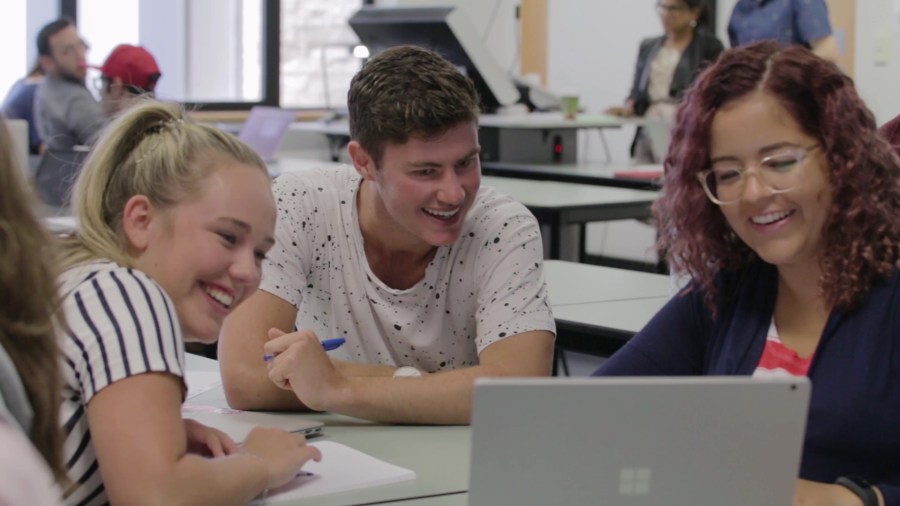
Dr Christine Chiu has become a strong advocate of an active learning, group work approach known in the literature as ‘team-based learning’ or TBL since moving in to teaching two years ago from a Senior Research Fellow position in the Biomedical Science Department. TBL is a relatively new paradigm in medical education at Macquarie University. It is a teaching approach that is both dialogic and inquiry-driven where the primary responsibility for learning is on the student. Chris describes TBL as a package of multiple educational concepts and techniques.

TBL provides both benefits and challenges for learner and teacher; however, Chris argues that the benefits far outweigh the challenges. It would seem as though her students agree with her, with one student recently offering up that the approach made him more “accountable to his peers” and ensured he completed the pre-work. Chris adheres to the traditional TBL approach (visualised above) and breaks up a tutorial into the following phases:
- Individual pre-tutorial work which generally consists of assigned readings or activities provided online and based around a case.
- The tutorial starts with an “Individual Readiness Assurance Test” or IRAT – a series of 10 multiple-choice questions (MCQs) that align to pre-work and/or content delivered during the week. Students are not shown their scores at this point.
- Students move into their “team” (created at the start of the session by Chris) and complete a “Team Readiness Assurance test” or TRAT. Students are given more time to complete the same MCQ quiz so that they can “discuss, explore and clarify” the most correct answer. During this phase, students are normally quite animated and very engaged in the learning activity. Team scores are invariably higher than individual scores – a natural reflection of the power of many minds applying logic and reason to a question.
- Clarification Session: Chris can instantly see (from the quiz dashboard) where the major areas of misconception and weakness lie. Chris brings the attention of the cohort back to the front and proceeds to adopt a facilitator role, asking for volunteers (or groups who answered correctly) to explain to the class their rationale/thought process for choosing a particular response. The clarification session is intended to be an interactive and safe space – where students are collaborative and supportive of each other while some clarify their misconceptions. Discussion of the pre-work is emphasised during this phase. Volunteers are called upon to give a case summary, for example.
- Focused Application task: The team, armed with fresh confidence, then move into a problem-based learning component, solving an authentic case study or applying the knowledge acquired throughout the earlier phases of the TBL to practical tasks. Students are reaping the benefit of a TBL approach through peer-learning: listening, communicating, critical thinking, and problem-solving. Chris believes that the learning activities should ideally extend and/or consolidate the pre-work.


Chris tells me that attendance and participation in her tutorials are high and that a TBL approach encourages deeper learning than other approaches she has tried. Even though Chris does not allocate summative grades to the IRAT/TRAT process, students still engage. Chris suspects that there are two main reasons for this: students receive scores for the individual quiz and peer pressure to get a high team score; students feel accountable to their team members and this drives engagement more than individual scores. Chris runs a leaderboard for the teams, which encourages friendly competition. The questions that are hotly debated during the clarification session often become exam questions – a way to check whether the clarification process is working.

Chris acknowledges that the workload is possibly higher, but the rewards are greater using this approach. Chris is keen for medical students to be independent, self-regulated lifelong learners, able to think critically and solve problems collaboratively.

Share this: